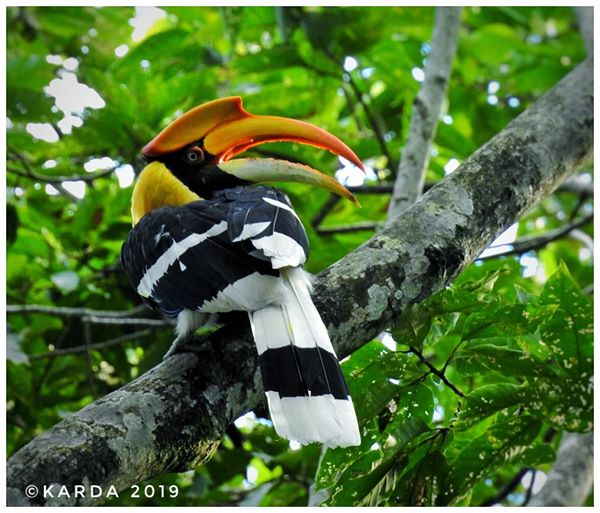Hornbills
are medium to large bird specialized in their habitat, feeding and nesting
behaviours. Present in tropical and subtropical areas of Bhutan, hornbills play
vital role in the forest ecosystem. It is acclaimed
that there are around 54 species of hornbills present globally (Kemp, 1995). However, studies
have indicated that Bhutan houses only four species of hornbills such as (Bucerotidae)
Wreathed Hornbill (Aceros undulates), Oriental Pied Hornbill (Anthracoceros
albirostris), Rufous-necked (Aceros nipalensis), and Great Hornbill (Buceros
bicornis) (Sherab, 2017; Webster, 2011; Clements,
1992).
Sarpang dzongkhag being located within
the protected areas of Royal Manas National Park, Phibsoo Wildlife Sanctuary
and Jigme Singye Wangchuk National Park harbours all four species of hornbills.
Most importantly, Dekiling Gewog host all four species of hornbills. Dekiling
is located at around 1100 feet (350m) above sea level at 26°
52’50” N and 90° 20’14” E in subtropical zones of
Indo-Bhutan border and the mid-Montana range.
Rufous-necked hornbills are present
in the higher region of Dekiling gewog while the other three species are a local resident.
Out of three local residents of hornbill at Dekiling, Wreath hornbill is found
greater in number than the others for the last one year’s observation. Although it is indicated as vulnerable by IUCN (https://www.iucnredlist.org/species/22682528/132400385), one will astonish to see such a great flock (more
10 -15 in numbers) together at Dekiling.
 |
| Oriental-pied Hornbill |
 |
| Great Hornbill |
 |
| Rufous-necked Hornbill |
 |
| Wreathed Hornbill |
Wreathed Hornbill also
called as Bar-pouched Wreathed Hornbill is mostly black with a full whitetail. Male has chestnut brown on the head and bright yellow throat while the female
has a bright blue throat. There mark on the throat of both male and female. The
casque on the beak looks more like a carved piece of wood with neat furrows or
wreaths from which it gets its common name. They have a call with three notes
that sounds like oek-uk-uk and is repeated several times, sometimes very
loudly, at other times more softly (https://www.hornbills.in/).
The presence of hornbills
indicates the good health of the forest.